Imagine the satisfaction of witnessing the seeds you’ve planted sprout, grow, and eventually mature into lettuce heads, spreading delightfully in your garden. But what happens when your tenure as a lettuce gardener turns sour? You blink, and there lies a shriveled lettuce plant. You see, lettuce (Lactuca sativa) doesn’t ask for an extraordinary care regime to thrive. Instead, it’s the simpler gardening mistakes that could snatch your salad dreams away before you can revel in your first lettuce crunch. We’re talking about issues like sowing at the wrong time, mistaken ideas about watering, and overzealous fertilizing. After all, nobody said that nurturing your salad greens would be a walk in the park, but that’s what makes the harvest all the more rewarding.
Lettuce thrives under specific conditions which, with a bit of knowledge and vigilance, can be easy to uphold in your green corner. For instance, most varieties grow best in USDA hardiness zones between 3 and 10 and well-draining, loamy soils. You want to venture into this journey knowing full well that each misstep made is but a strategic moment of learning, empowering you to overcome the obstacles and achieve your garden dreams. Fortunately, a cluster of solutions awaits, some of which turn household staples like essential oils into your lettuce bed’s frequently-dialed rescuers. Such resourcefulness won’t just save your crop, as championing the cause of organic gardening will also help you cast aside dependence on synthetic products.
Planting at the wrong time
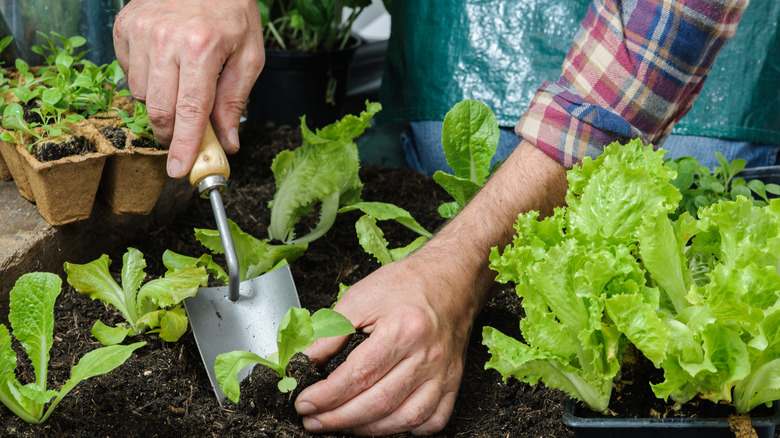
Leading our list of mistakes to avoid when farming lettuce is wrong timing. Contrary to warm-season vegetables (like tomatoes and eggplants), lettuce, a cool-season vegetable, flourishes in cooler temperatures. The issue with sowing lettuce seeds during hot summer months is two-fold. First, lettuce is bolt-prone under excessive heat, triggering the plant to accelerate its life cycle. Resultantly, the leaves turn bitter, making them unsavory for salads. The second hazard of summer planting is that lettuce becomes lethargic under intense heat. This inertness could set up the plant for invasion by summer pests. The ideal temperature for lettuce germination ranges between 60 and 80 degrees Fahrenheit.
Overlooking the soil properties
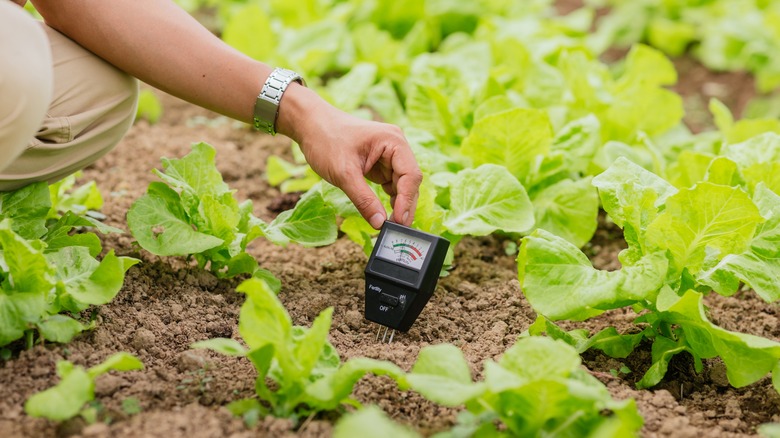
When diving into new adventures, our thrill and anticipation often form a blind spot around vital preparation. And when we’re talking about lettuce farming, planting in the wrong soil is preparing to fail. Planting lettuce in poorly-draining soil is like building a state-of-the-art home on a shaky foundation. What you’ll get is lackluster growth and a scanty harvest. The crop craves well-draining soil that’s buzzing with organic matter necessary for a robust root system and vibrant foliage. Not blessed with such an unleavened playground in your backyard? Infuse life into your soil with organic materials like compost.
Sowing lettuce seeds too deep
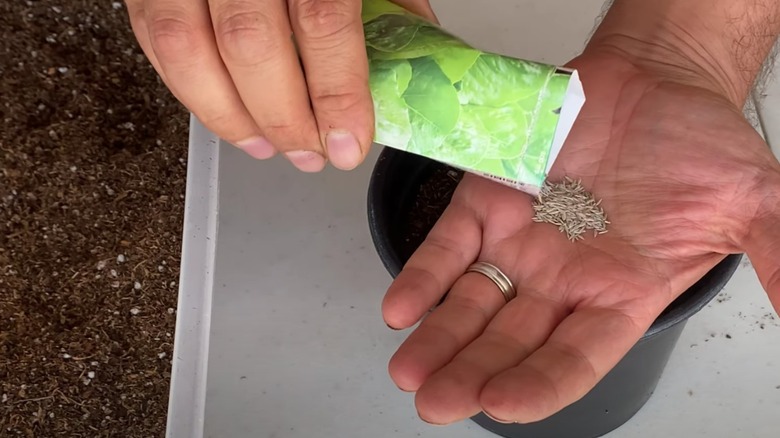
Toward Garden / YouTube
Beware of the peril of planting lettuce seeds too deep. If you plunge them deeper than the recommended ¼ to ½ inch beneath the soil surface, you could engage in a vicious duel with germination. These tiny champions fight gallantly to reach sunlight, needing it to power their push through the soil, but they only possess energy reserves for a meager 1-centimeter journey toward the surface. Plunged deeper, lettuce seeds might not surface, forever unseen and uneaten. Further, layering the seeds so superficially garners its unique demand — diligent watering. Overlook this, and the consequence is a barren vegetable bed.
Crowding your lettuce seedlings
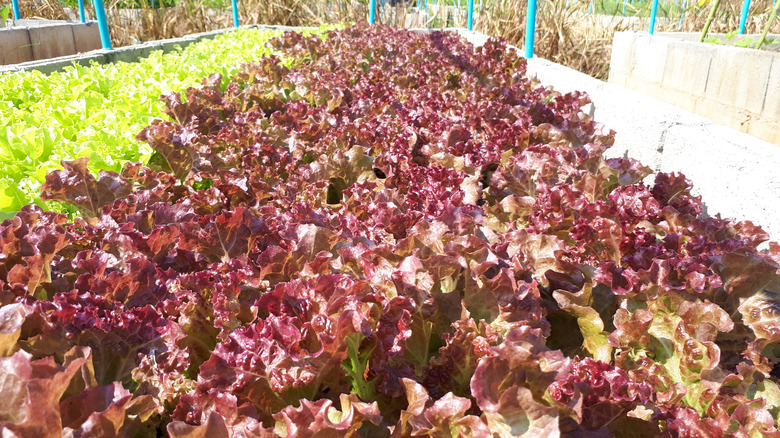
Benj.Dsn/Shutterstock
When lettuce seeds are sown too close, it’s not only the air circulation that’s limited. The plants end up battling against each other to grab every little bit of sunlight, water, and nutrients they can get their roots and foliage on. Following this battle, the plants’ growth gets crippled, and the promise of a rich harvest fades. In addition, crowding bolsters a damp, confined micro-environment, which is an open invitation for diseases and pests. While lettuce is not an aloof plant that wants the whole garden, it doesn’t appreciate being crammed together either. Instead, ensure the plants are 8 to 12 inches apart.
Incorrect lettuce watering regime
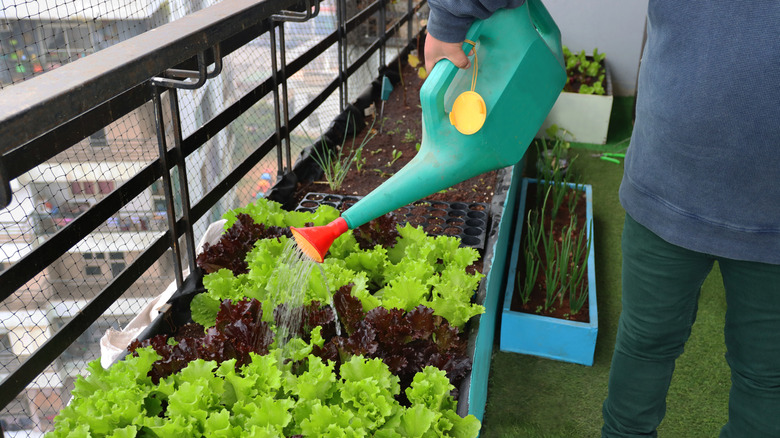
Mtreasure/Getty Images
While lettuce plants, being composed of nearly 95% water, love being well-hydrated, overwatering them can be as damaging as underwatering. Subjecting the fragile seedlings to strong water currents can disturb the soil around them, disorienting their tender roots. As the plant matures, it will need a deep watering regimen that leaves the soil consistently moist but not soggy. Remember, waterlogging often culminates in suffocation and root rot. Conversely, too little water may induce plant stress. Generally, ensure your lettuce gets at least 2 inches of water weekly, or ideally, water when the upper inch of soil feels dry.
Overlooking disease and pest symptoms
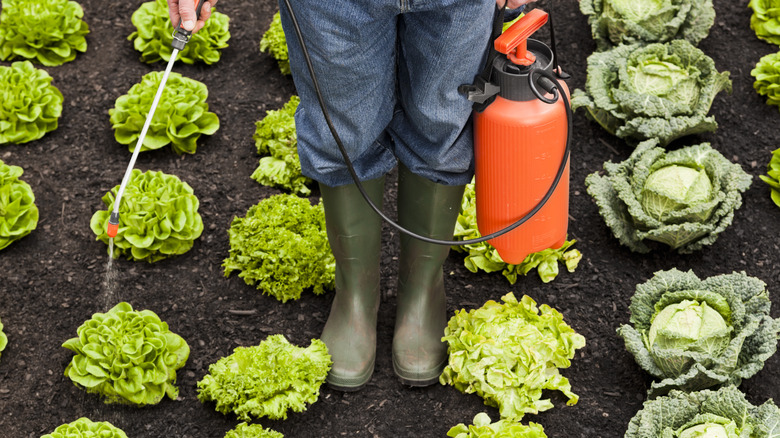
Aluxum/Getty Images
It’s commonplace for gardeners to underestimate the chaos pests and diseases can spread until their lettuce crop is obliterated. Early indicators of diseases such as powdery mildew or Septoria leaf spot and invasions by critters like slugs and snails need to be noticed to avoid a death sentence to your lovingly-nurtured lettuce plantation. The best strategy against these threats blends swift detection, prompt intervention, and strategic prevention. For example, a natural fungicide like neem oil excels in combating lettuce aphids and powdery mildew. For those detestable slugs, an essential oil spray comprised of pine, cedarwood, and hyssop can work wonders.
Not rotating your crops
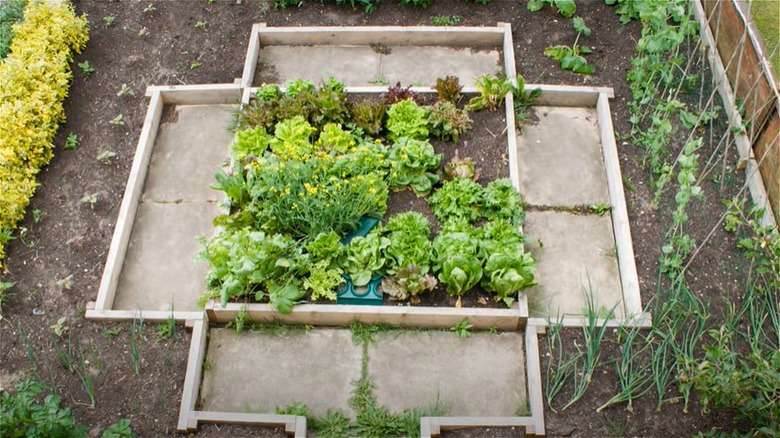
GrowVeg / YouTube
Another mistake to avoid when growing lettuce is inadequate crop rotation. Monocropping fosters an overaccumulation of crop-specific pests and diseases that can severely harm your lettuce. Besides, each plant has unique nutrient requirements, and persisting with the same crop year-round might drain the garden soil of vital nutrients. Tailor a detailed plan for your crop rotation, grouping plants with similar nutrient requirements together. Adding members from the legume family (think peas) to your rotation sequence can replenish nitrogen that the previous crops might have bled out while cutting the disease load in your garden beds.
Overfertilizing
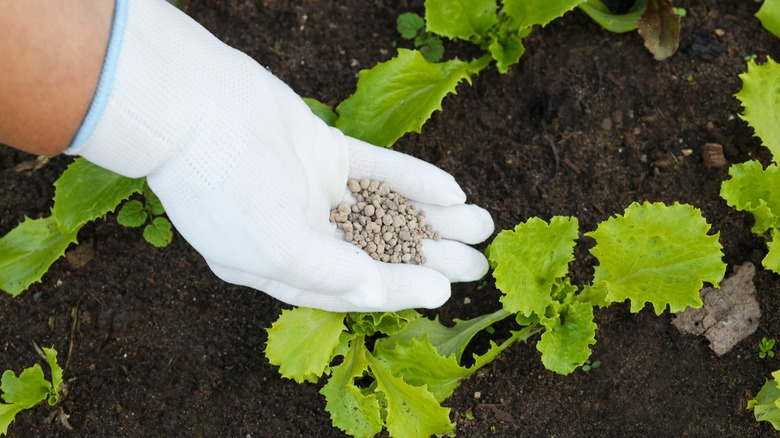
VeIrina/Shutterstock
While chemical fertilizers are designed to enhance plant growth by providing necessary nutrients, an overdose can lead to salt build-up, causing fertilizer burn. Therefore, moderation is key. The recommended frequency is biweekly, with a well-balanced liquid fertilizer from a watering can or granules that can then be watered. Are you more of an eco-warrior? Compost, worm castings, or well-rotted manure are excellent recommendations for enhancing the soil’s nutrient content, structure, and water retention capacity organically before planting. However, don’t dive in blindly. A soil test can arm you with valuable knowledge about your soil’s nutrient and pH levels — the ideal level is between 6.0 and 7.0.
Insufficiently shading your crops
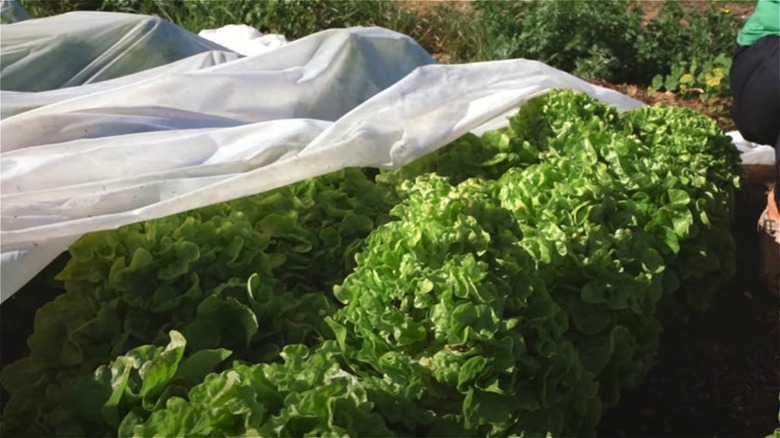
San Diego Seed Company / YouTube
Much like leaving a youngster alone in an unforgiving desert without shelter, asking your lettuce to bear relentless sun rays is a harsh request. As for how much sunlight lettuce plants need, 6 to 12 hours fits the bill. However, unprotected exposure in a sweltering environment stresses out your lettuce, causing it to bolt prematurely and turn bitter. An easy solution exists in the form of shade cloth or nettings designed to offer a protective shield from the searing sun. You could also leverage tall plants in your garden to concoct a refreshing microclimate that your lettuce would cherish.
Not protecting plants with fences
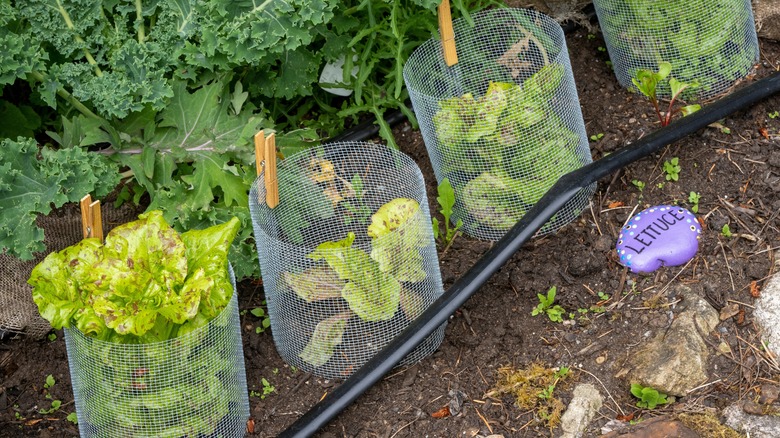
Danita Delimont/Shutterstock
Establishing a lettuce garden is synonymous with sounding a dinner gong for some herbivores and omnivores. Rabbits, deer, chipmunks, raccoons, squirrels, and groundhogs all hear it loud and clear and can’t resist the call of crisp greens. Turning a blind eye to the necessity of a proper fence is like leaving the buffet open to a crowd of hungry eaters. In your battle against unwanted intrusion into your vegetable garden, fencing knights you might consider include chain links, woven wire, poultry fences, and hex netting. And don’t forget about tunneling critters — these demand a fence that’s buried about a foot into the ground.
Not applying mulch
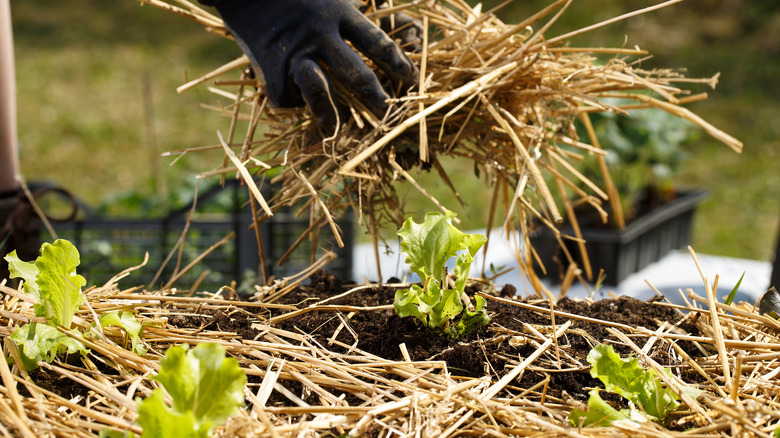
Zlikovec/Getty Images
Overlooking the importance of mulch for lettuce plants is akin to tossing away a treasure map, setting the stage for uneven growth and a disappointing harvest. You can always count on mulch to stabilize soil temperature, retain moisture, and even suppress weeds. Organic materials such as grass clippings, shredded leaves, and straws make excellent choices here. However, be cautious not to smother the plant stem; leaving a small breathing space goes a long way to ward off potential rot. Further, overly-thick mulch can obstruct oxygen and water from reaching the plant roots, not to mention it could be a hideout for lettuce-loving rodents.
Using unsanitary gardening tools when tending lettuce
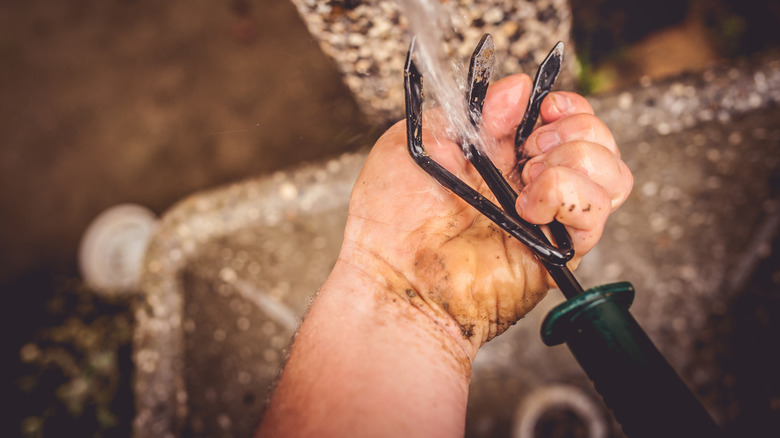
Casarsaguru/Getty Images
Our list of lettuce gardening mistakes can’t be exhaustive without spotlighting the necessity of cleanliness. Unsanitary gardening tools transform into nefarious carriers, ferrying pests and diseases from plant to plant. That could unleash absolute anarchy upon your once flourishing lettuce haven. As a golden rule, clean and dry your gardening tools after each use. It’s simple: Use soapy water to scrub off any dirt and grime, soak the tools in vinegar or bleach-water solution for disinfection, then thoroughly dry them to keep the arch enemy that is rust at bay.



